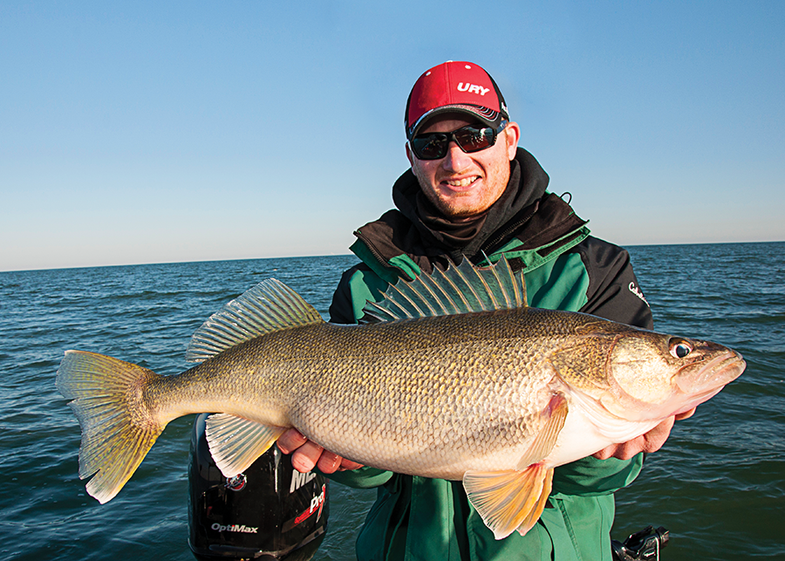Ice Off: How to Catch Post-Thaw Walleyes
The secret to scoring monster walleyes right after the thaw is fishing like nothing’s melted.

Photo by Joe Cermele
Lucky enough to have open water this month? Trade your shanty for a boat, of course, but fish like the lake is still locked up. Twenty years of walleye experience has taught me that just because the ice is off doesn’t mean the fish instantly change their feeding and holding patterns. So park yourself in a good spot, slow down, and pretend it’s still February.
Split Shot As you scout spots, run your sonar in split-screen mode, keeping one side zoomed in close to the bottom. Walleyes can hug the lake floor so tightly right after ice-out that they may not register in full-screen mode.
Get Flashy Most anglers don’t think to use their ice-fishing electronics in open water, but these are incredibly useful tools right after ice-out. Unlike a fishfinder, a flasher lets you watch your lure, and the fish’s reaction to it, in real time. That means you can adjust your presentation and jigging speed until you find out exactly what most fish want.
Feel It Out Set the hook on any slight tap, as bites can be subtle.

Opening Act
Drop heavy metal and play it straight.
Anchors Away A heavy anchor with 5 feet of coated chain is your best friend at this time of year, because the game is all about staying put in the wind and current and letting walleyes come to you. Like a deer hunter trying to ambush a buck, set up near natural funnels. Deep troughs between islands and the mainland, or steep contour changes near shore, create bottlenecks that fish and bait move through. Walleyes like to spawn on rocky bottoms that are 3 to 15 feet deep and transition steeply to deep, muddy bottoms. The closer the funnel is to these spawning grounds, the better.
Drop In Jigging Raps, Swedish Pimples, and jig-and-minnow combos produce just as well now as they did on the ice, and vertical jigging allows you to control the speed and action of the lure more effectively than casting and retrieving. Start by holding the rod nearly motionless, letting the bobbing boat impart action. This is often all it takes to trigger fussy fish to bite. If that doesn’t work, incrementally increase your jigging speed until you draw a strike. Keep your line as vertical and taut as possible so you can feel the lightest bump.
Post-Thaw Gear
Must-have tackle for an ice-out attack.

[1] Humminbird Ice 45 With a large LCD display, this unit makes seeing the entire water column easier—which is a plus in open water. The depth and scale adjust automatically, so you’ll always know if your lure is in the zone. $400; humminbird.com

[2] Sunline SX1 Small-diameter braided line helps you keep your presentation vertical in all conditions. Ten- or 12-pound-test is strong enough to handle heavy fish but sensitive enough to let you feel any tap or hit on the drop. $21; sunlineamerica.com

[3] Navy Anchor I’ve found that a 30-pound Navy anchor works best for holding a big walleye boat on muddy bottoms. A rope that’s at least three times the fishing depth ensures a better hold if the wind kicks up or the current is strong. $55; basspro.com